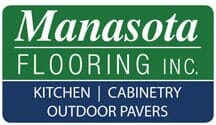Choosing the right flooring for your kitchen is crucial because it needs to be both durable and stylish while standing up to daily wear and tear. One flooring option that homeowners often consider is laminate.
But is laminate flooring a good choice for a kitchen environment? Let's explore the benefits and drawbacks to help you decide if it's the right option for your home.
1. Durability and scratch resistance:
One of the main reasons laminate flooring is popular for kitchens is its durability. Made from layers of compressed fiberboard with a tough wear layer on top, laminate is designed to withstand heavy foot traffic and resist scratches.
This makes it an excellent choice for busy kitchens where spills, dropped utensils, and high traffic are common. However, while it is resistant to minor wear and tear, it's important to keep in mind that sharp objects or heavy impacts can still cause damage to the surface.
2. Affordability and realistic look:
Laminate flooring offers the look of hardwood, tile, or stone at a fraction of the cost. If you're dreaming of a hardwood kitchen floor but need a budget-friendly alternative, laminate can provide a similar aesthetic without the high price tag.
Advances in printing technology mean that laminate flooring now comes in a variety of realistic designs and textures, allowing you to achieve the look of more expensive materials like oak or marble without breaking the bank.
3. Ease of maintenance:
Kitchens are prone to spills and messes, making easy maintenance a top priority. Laminate flooring is relatively easy to clean; regular sweeping and occasional damp mopping is usually sufficient to keep it looking fresh.
Its smooth, sealed surface doesn't trap dirt, crumbs, or allergens, which makes it a great choice for households with children or pets. However, you should avoid using excessive water when cleaning, as standing water can seep into the seams and cause swelling or damage over time.
4. Water resistance:
One of the biggest considerations for kitchen flooring is moisture resistance. While laminate is more water-resistant than some flooring options, it is not entirely waterproof. Prolonged exposure to moisture can cause the boards to swell or warp, which is a concern in a kitchen environment where spills are common.
If you're set on laminate but worried about moisture, look for water-resistant laminate options specifically designed for kitchens and bathrooms. These versions often feature tighter seams and protective coatings to help prevent water damage.
5. Comfort and sound insulation:
Laminate flooring has a softer feel underfoot compared to materials like tile, making it more comfortable if you spend a lot of time cooking or standing in the kitchen. It also has some natural sound-dampening qualities, which can help reduce noise in a busy household.
For added comfort and sound insulation, consider installing an underlayment beneath the laminate flooring. This not only improves the comfort level but also helps protect against minor moisture issues.
6. Installation flexibility:
Laminate is known for its ease of installation, often featuring a click-and-lock system that makes it a great choice for DIY enthusiasts. This floating installation method means that laminate can be installed over many types of subfloors, including concrete or existing flooring.
Its installation flexibility can save time and labor costs, making it a practical choice for kitchen remodels. Laminate flooring can be a good option for kitchens if you prioritize durability, affordability, and style.
However, if moisture resistance is a primary concern, you may want to explore water-resistant or waterproof options to ensure your flooring will stand up to the demands of a busy kitchen.
For expert guidance and a wide selection of laminate flooring options, reach out to us or visit Manasota Flooring at our showrooms in Sarasota, Bradenton, and Venice, Florida.








